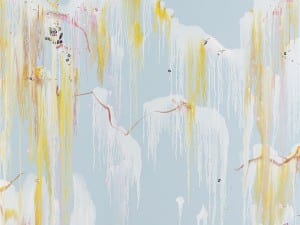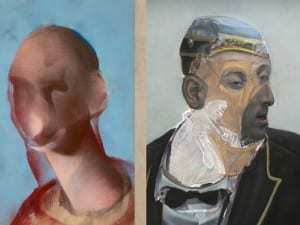Birds Eye View’s Rachel Millward talks about how their popular film festival applauds the creativity and brilliance of women in film.
The film festival circuit is a hotbed of talent and offers a rich selection of films demonstrating ways in which the industry is developing. But really, how diverse is the film industry? The dominating presence in the business is still male: only around 7% of film directors and about 12% of screenwriters are women. Birds Eye View is an organisation that aims to address this imbalance and their annual film festival is a celebration of women in film, highlighting their talents and contributions to the industry whilst at the same time drawing attention to the gender discrepancies that persist in film culture. Rachel Millward of Birds Eye View chats about the festival and the role of women in film today.
Birds Eye View Film Festival is now in its seventh year. How did the festival begin and how has it developed?
I launched Birds Eye View in 2002 with Pinny Grylls, whose work I was producing as the other half of Invisible Films. To premiere our first short, we hired the Curzon cinema for one hour at £125. We saw an opportunity: here was a chance to develop a platform for our peers – emerging women filmmakers. We put a call out and curated a fantastic programme of five films. The queues stretched around the block and we had to turn people away. There was a tangible buzz and that night I saw the potential in Birds Eye View. By 2005, it was a registered charity, and we launched the UK’s first major women’s film festival on International Women’s Day (8 March). Birds Eye View grew from a one-off short film event to an eight-day extravaganza of international feature, documentary and short films, and master classes. Contributors that year included Tracey Emin (with Top Spot) and Andrea Arnold (with Oscar-winning short film Wasp).
How does this year’s Birds Eye View festival differ from previous years?
Each year we have a theme for a retrospective. 2011 has the darkest twist yet: Bloody Women: From Gothic to Horror. The retrospectives offer an opportunity to examine and celebrate the contribution of women to early cinema. We commission cutting-edge female artists to create and perform live scores accompanying these silent films, giving them new life for new audiences. This year we’ve got a score for choir written and conducted by Grammy Award-winning Imogen Heap, and another by pop-sensation Micachu. I hope that Bloody Women will surprise many by revealing the extent to which women have helped form the horror genre, which is typically seen as male-dominated.
Kathryn Bigelow is a highly successful woman in film and her work is concentrated in those genres typically perceived as male, such as horror and action. Do you think that success can only come on those terms?
I don’t think Kathryn Bigelow makes movies on male terms nor do I think it’s only men who like horror and action. Women contributed to horror from the very beginning. I’m keen to avoid the suggestion that women are more likely to make one type of film than another. Women directors often bemoan only being asked to make chick flicks, or “women-specific” content but I don’t see any reason why women can’t make huge moneymaking blockbusters too!
The representation of women in film is often tired and stereotypical. Do you think there is a need to revolutionize the depiction of women in film?
In the very beginning, there were women in cinema. In fact, the very first narrative film was made by Alice Guy in 1896. Women participated in slapstick humour, and enjoyed a range of physical expressions on screen. Once it became a moneymaking business, and focussed in Hollywood, men began to take over. Women’s contributions were deemed immoral, childbirth and eroticism were banned. However, through the Golden Age of Hollywood (late 1920s-1950s), when the audiences were known to be predominantly female, women were still allowed to speak with quick wit and intelligent dialogue. Then came the real dark ages, when women were pushed from central character to side-kicks, dumbed down to mere foils for male leads. The situation is starting to change, but we don’t need to revolutionise the role of women in cinema so much as to go back to the beginning.
The female audience is a largely untapped market, despite having great spending power. Do you anticipate a move to appeal more to this market?
There are a lot of myths about cinema audiences. There’s a perception that they’re mainly young men, but actually the average UK cinema-goer is a 30-something-woman. I am baffled by why there’s such general global shock when huge hits (Sex and the City, Mamma Mia) attract hoards of women to the cinema. But the whole thing is cyclical. Films that are perceived to be marketable are the ones that get made and once we are in the habit of producing male-focussed films, it’s hard to break; there is a lack of confidence that a different type of film would work. Time and again the female blockbuster audience is proved; let’s hope it gives commissioners more confidence to break the mould.
Who is doing interesting work in the film industry today and who is an inspiration for aspiring female filmmakers?
Some of the most interesting work, at the moment is cross-arts – an experimentation between film and other art forms. This year we have a short film by Marianne Elliott, our Fashion Loves Film programme, cutting-edge animations, and Out My Window – a brilliant interactive film-based website. As for inspirational filmmakers, it’s been a great 18 months for female directors. Clio Barnard, Andrea Arnold, Sally Potter, Lucy Walker and Kim Longinotto all received thoroughly deserved acclaim for recent work as has Susanne Bier, whose brilliant new film In A Better World scooped a Golden Globe (and will be at BFI Southbank as part of Birds Eye View). Aspiring female filmmakers may need support to get their careers started, but they’re certainly not short on role models.
Gillian Wearing’s Self Made is screening at this year’s Birds Eye View. The film comments on the notions of identity within a society that blurs the boundaries between reality and fiction. What are your thoughts on this?
One of the most important aspects to the film is the fact that, for Wearing, each participant’s character is in some way a projection of their “real” selves; even the most outlandish characters are informed in some way by reality. Wearing’s point is that fiction and reality are to a large extent interchangeable. In the context of a world of CCTV and reality TV she asks whether we’re not all playing out roles in some way, consciously or not. Self Made looks at the catharsis and the creativity that experimenting with this idea can provide and it’s a great reminder of the impact that storytelling can have on the real world.
Some of the films screening will be accompanied by live soundtracks. How do you anticipate live cinema developing?
Birds Eye View’s Sound & Silents is a key part of our work and these always prove to be a thought-provoking and exciting way for audiences to re-engage with classics. I think cinema could do more to engage with live events, especially as it’s increasingly easy to watch films in any location, which makes cinema by nature feel closer to a live event. Equally, there are a lot more live events going into cinemas, through programmes such as National Theatre Live, so the change is going both ways, and I’m sure we’ll see more cross-over in the months ahead.
What’s next for Birds Eye View?
With the end of the UK Film Council, currently our major funder, we are in a vulnerable place. However, with the year on year growth of the Festival and huge support from the industry, we are confident we can find ways to survive and prosper! We’ll continue to remain fixed on creative excellence, celebrating outstanding women filmmakers, and finding ways to support new talent, ensuring the next generation is equipped to change the current stats. Additionally, we look forward to further exploring the interplay between film and other art forms, and embracing the many innovative ways that moving image is playing a major role in culture.
Birds Eye View ran from 8-17 March 2011 at the BFI Southbank and the ICA in London. www.birds-eye-view.co.uk.
Bryony Byrne





